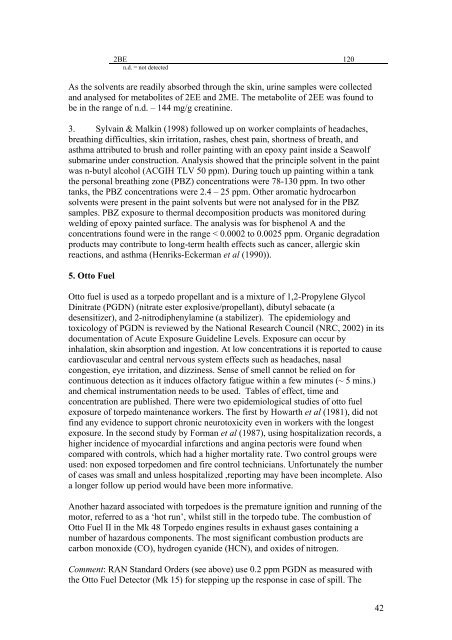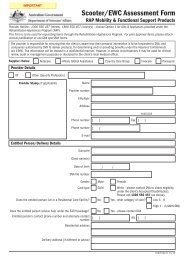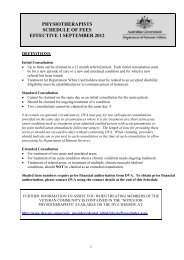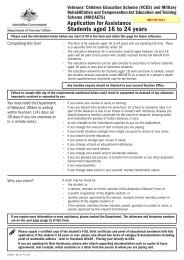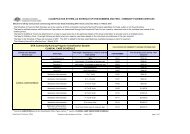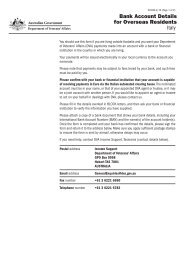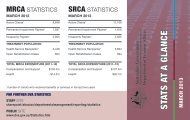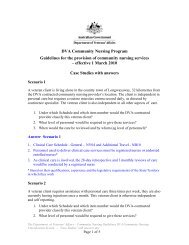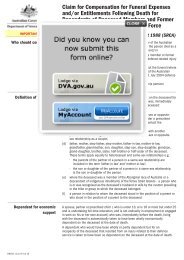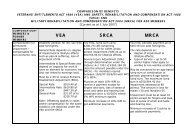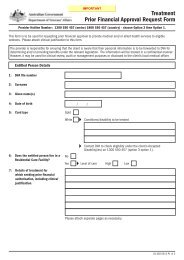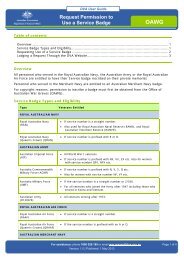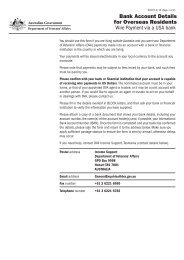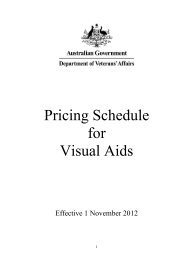Oberon Class Submarine Occupational Hygiene Project Final Report
Oberon Class Submarine Occupational Hygiene Project Final Report
Oberon Class Submarine Occupational Hygiene Project Final Report
Create successful ePaper yourself
Turn your PDF publications into a flip-book with our unique Google optimized e-Paper software.
2BE 120n.d. = not detectedAs the solvents are readily absorbed through the skin, urine samples were collectedand analysed for metabolites of 2EE and 2ME. The metabolite of 2EE was found tobe in the range of n.d. – 144 mg/g creatinine.3. Sylvain & Malkin (1998) followed up on worker complaints of headaches,breathing difficulties, skin irritation, rashes, chest pain, shortness of breath, andasthma attributed to brush and roller painting with an epoxy paint inside a Seawolfsubmarine under construction. Analysis showed that the principle solvent in the paintwas n-butyl alcohol (ACGIH TLV 50 ppm). During touch up painting within a tankthe personal breathing zone (PBZ) concentrations were 78-130 ppm. In two othertanks, the PBZ concentrations were 2.4 – 25 ppm. Other aromatic hydrocarbonsolvents were present in the paint solvents but were not analysed for in the PBZsamples. PBZ exposure to thermal decomposition products was monitored duringwelding of epoxy painted surface. The analysis was for bisphenol A and theconcentrations found were in the range < 0.0002 to 0.0025 ppm. Organic degradationproducts may contribute to long-term health effects such as cancer, allergic skinreactions, and asthma (Henriks-Eckerman et al (1990)).5. Otto FuelOtto fuel is used as a torpedo propellant and is a mixture of 1,2-Propylene GlycolDinitrate (PGDN) (nitrate ester explosive/propellant), dibutyl sebacate (adesensitizer), and 2-nitrodiphenylamine (a stabilizer). The epidemiology andtoxicology of PGDN is reviewed by the National Research Council (NRC, 2002) in itsdocumentation of Acute Exposure Guideline Levels. Exposure can occur byinhalation, skin absorption and ingestion. At low concentrations it is reported to causecardiovascular and central nervous system effects such as headaches, nasalcongestion, eye irritation, and dizziness. Sense of smell cannot be relied on forcontinuous detection as it induces olfactory fatigue within a few minutes (~ 5 mins.)and chemical instrumentation needs to be used. Tables of effect, time andconcentration are published. There were two epidemiological studies of otto fuelexposure of torpedo maintenance workers. The first by Howarth et al (1981), did notfind any evidence to support chronic neurotoxicity even in workers with the longestexposure. In the second study by Forman et al (1987), using hospitalization records, ahigher incidence of myocardial infarctions and angina pectoris were found whencompared with controls, which had a higher mortality rate. Two control groups wereused: non exposed torpedomen and fire control technicians. Unfortunately the numberof cases was small and unless hospitalized ,reporting may have been incomplete. Alsoa longer follow up period would have been more informative.Another hazard associated with torpedoes is the premature ignition and running of themotor, referred to as a ‘hot run’, whilst still in the torpedo tube. The combustion ofOtto Fuel II in the Mk 48 Torpedo engines results in exhaust gases containing anumber of hazardous components. The most significant combustion products arecarbon monoxide (CO), hydrogen cyanide (HCN), and oxides of nitrogen.Comment: RAN Standard Orders (see above) use 0.2 ppm PGDN as measured withthe Otto Fuel Detector (Mk 15) for stepping up the response in case of spill. The42


